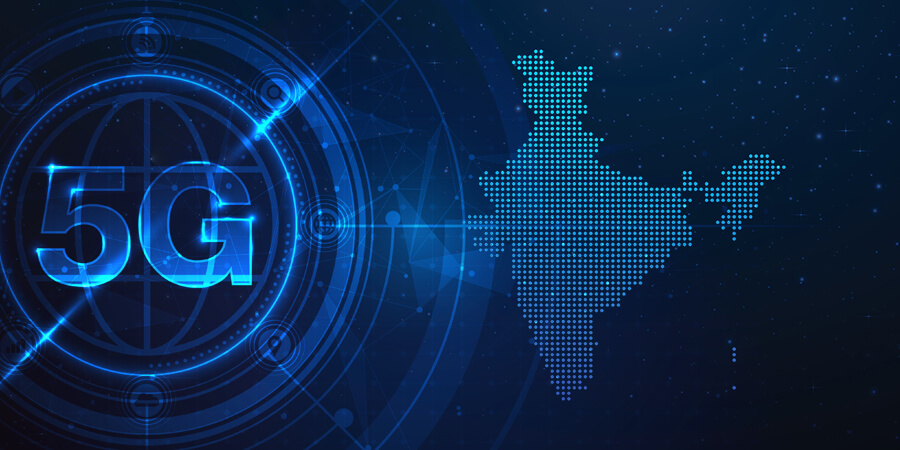India's telecommunications market has witnessed remarkable growth and innovation in recent years. As the country continues to evolve as a major player in the global tech landscape, key developments are significantly shaping the industry's future, not the least of which is the expansion of 5G trials. This latter strategic move is set to revolutionize India's digital landscape, presenting new opportunities for businesses, consumers and the overall economy as a whole.
In what is no less than a “technology revolution,” India is aiming to become a true innovation partner for the world. The nation is achieving this through digital transformation initiatives, the development of intelligent platforms and products, and the adoption of emerging technologies such as analytics, Artificial Intelligence (AI), robotics, automation, blockchain, the Internet of Things (IoT), edge computing and AR/VR.
The implementation of 5G technology is expected to bring all of these advancements together and drive high-tech innovation in India. Importantly, success in the 5G era will require collaboration among various stakeholders, including enterprises, telcos, technology players, start-ups, academia and the government.
Furthermore, enhancing research and development capabilities and involving small and medium enterprises (SMEs) and start-ups in the 5G ecosystem will be crucial. SMEs/start-ups possess the agility and adaptability needed to develop, test and deploy innovative 5G solutions that cater to specific industries. India's vast start-up ecosystem provides ample opportunity for local expertise to contribute to an emergent and self-reliant 5G ecosystem in the country.
The Indian government has allowed telecom operators in the country to begin testing 5G technology. Trials have been conducted using different frequency bands, including the mid-band, mmWave band, sub-1 GHz band and existing spectrum, the latter of which can be used for 5G or any other technology covered by the Access Service License.
By June 2022, 496 operators in 150 countries had invested in 5G networks, with 218 operators in 87 countries already launching commercial 5G services. And prior to that, there were a total of 521 million 5G subscribers globally in December 2021. The aggressive advertising of 5G worldwide has focused on the technology’s superfast speed, low latency and high capacity, which together stand to revolutionize businesses by enabling new levels of connectivity and complexity.
This opens up opportunities for IoT innovation and commercial use, such as driverless cars, drones, AI, robotics and virtual and augmented reality. Additionally, the fusion of 5G, AI and IoT will lead to intelligent connectivity and new disruptive digital services. And as a result of such impact, the benefits of 5G for businesses are sure to include automation, increased productivity, real-time data analysis, improved battery life, cost savings in IoT infrastructure, reliance on cloud-based software and easier collection and analysis of vast amounts of real-time data.
Moreover, Tech Mahindra, a partner of Rakuten, is looking beyond networks and exploring opportunities in medical devices and shopfloor modernization. They believe that 5G will play a significant role in the factory of the future, enabling connectivity in remote areas. The transformation to 5G will require changes in customer experiences, operating models and product designs, leading to open business models and partnerships across industries.
Cognizant identifies five key areas of transformation for 5G: software-defined infrastructure; agile technology offices; intelligent APIs for third-party capabilities; engineering products for futuristic demands; and rendering solutions through immersive touchpoints like IoT and AR/VR/MR.
Similarly, Jain from Pareekh Consulting sees multiple opportunities with 5G, with the initial phase focused on infrastructure creation and subsequent phases involving partnerships with telcos for enterprise use cases as well as with hyperscalers like AWS, GCP and Azure for edge use cases.
Meanwhile, Hexaware is not prioritizing the initial wave of opportunities but is instead focusing on infrastructure modernization and network rollouts. As they see it, the real opportunity for creating solutions is expected to come 12-18 months later.
While such promises to the technology seem boundless, 5G rollouts may indeed face delays due to challenges such as: high prices for 5G spectrum; limited availability in certain areas; and the maturity of the technology for business use cases. Only time will tell along this new and uncharted road.
Driven by these momentous 5G trials, India's telecom market expansion is poised to reshape the digital landscape of the country. While challenges exist, the opportunities for digital transformation and growth in the telecom sector are immense. Through proactive regulatory frameworks, supportive government initiatives, and collaborative efforts, India can pave the way for a digitally connected future.





